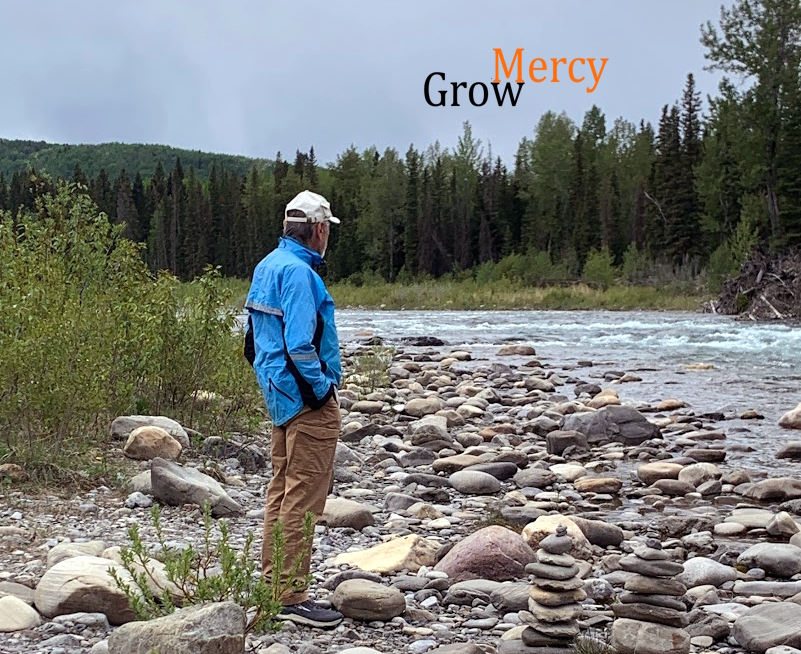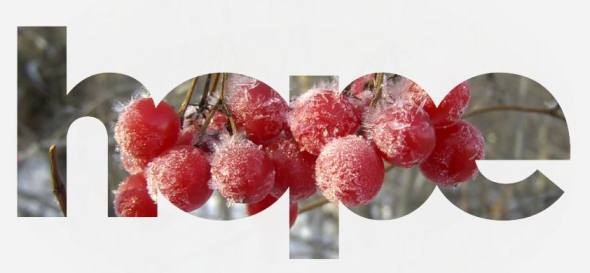There’s hope that has fear as a twin. A tremulous sort of hope that lives in the future and leeches off the past. It’s derivative. It counts on results and outcomes for its survival. But there’s a wise hope that blows off fear because it’s anchored beyond hope and fear. (Margaret Wheatley ruminates on this here.)
I took this photo many years ago while wandering along the Whitesand River in Saskatchewan. I’ve long loved the picture—its sublimity, its tranquillity, its hope.
I make it out as an image of hope that’s rooted both within and beyond its immediate experience on this earth. It’s at home with now. Gives past and future a passing glance. Its moment is the frost, its now is to shine red in the frost, shine red because to shine red is who it is; shine red because it’s the right thing to do, despite the possibility of overwhelming frost.
I’m not sure how often we manage to share this kind of wise-strong-hope at the Mission; but it’s what we aim for. Results, outcomes, like the impassioned yet nebulous end of homelessness in ten years are released in favour of daily doing what’s right. Right: like a simple, "Hello Dave," at the open door; a warm meal made with care and served with humility, a bed and blanket at night with some dignity.
Right things done in the present clearing of this person, this relationship; right things done beyond hope-and-fear and with dignity leave results and outcomes to themselves. (Somewhat paradoxically, giving outcomes space to breath and a better chance to succeed.)
On this, Wheatley references Vaclav Havel: "Hope is an orientation of the heart. It transcends the world that is immediately experienced and is anchored somewhere beyond its horizons. . . .It is not the conviction that something will turn out well, but the certainty that something makes sense regardless of how it turns out.”
And Christian monk and mystic, Thomas Merton, whose ardent fan I am, counsels us, "Concentrate not on the results, but on the value, the rightness, the truth of the work itself. …you gradually struggle less and less for an idea and more and more for specific people. … in the end, it is the reality of personal relationship that saves everything.”
And, well, that’s the nut of it: whatever your vocation, whatever you do, wherever you find yourself, real hope rests not in the outcome of the struggle, but in linked arms.



Beautiful, Steve – but – as Merton says, and as I think you’ll agree – it is “anchored somewhere beyond its horizons” – the arms linked as we strain towards the “upward call”.
Indeed! “Hope anchored beyond its horizons” is what inspires the present moment where the action is. Thanks Steve, Wheatley and Merton!
Hope is a message we need to hear more in our daily lives, stories that counter those that report on fear and greed and people gone astray in their lives. I love the line “Hope is an orientation of the heart” but fear the implications if people no longer find something to be hopeful for.
Thanks for the Wheatley reference. A colleague of mine is writing a biography of Merton, and through discussions with him, I have begun to learn about Merton’s interweavings of philosophy and thoughts on nature. I need time to read and learn more.
Thanks for the nice Saturday morning reflections, Stephen.
I cannot add anything to what has already been said, but to thank you for a post with reference to Thomas Merton, Vaclav Havel and Meg Wheatley. I am not sure there is a better way to begin a day.
Thank you Sam. Well said.
To someone who continues to inspire and take action–thank you Ike.
Diane, I continue to go back to Merton’s books. There’s a timeless depth to his thought. And thank you for reflecting with me.
Thank you Ivon. And I agree, can’t go far wrong with any one of these people.